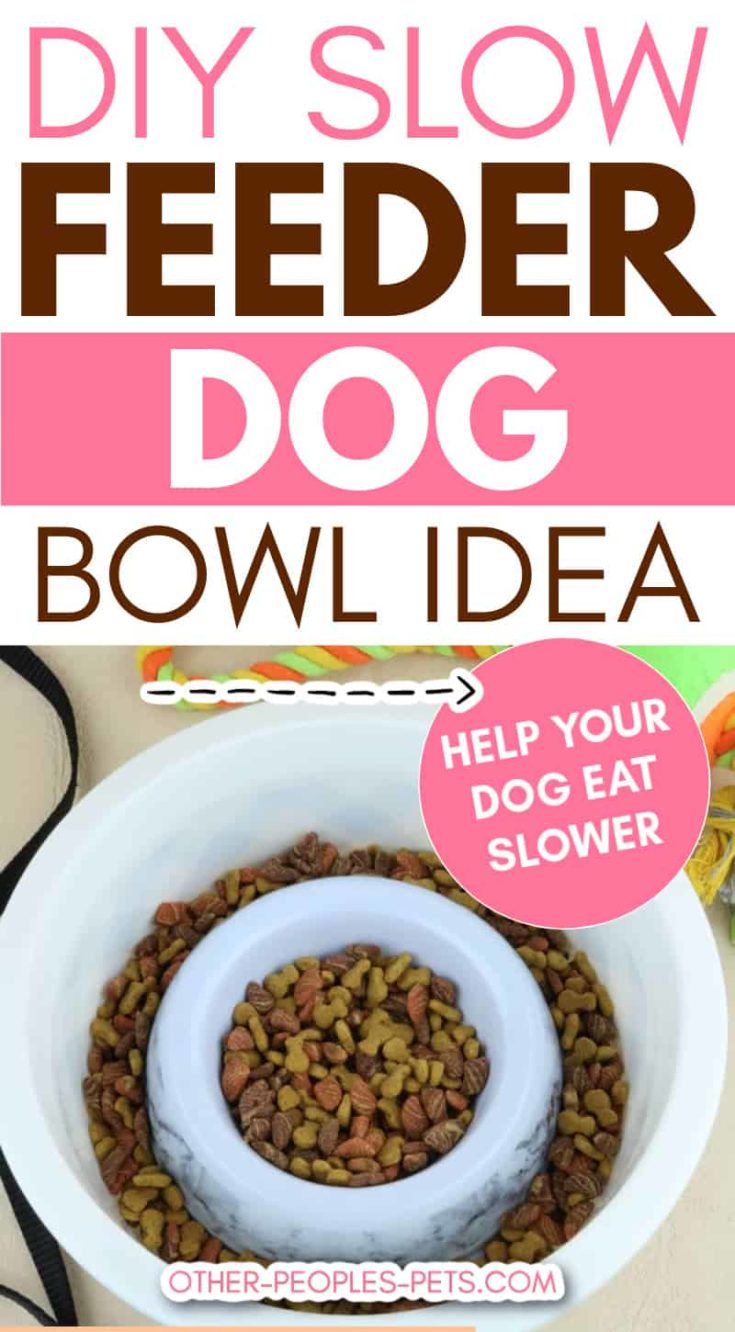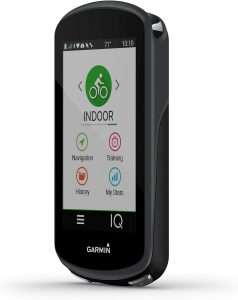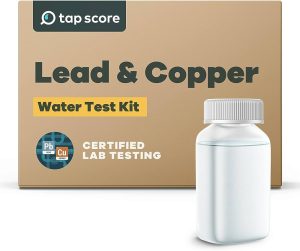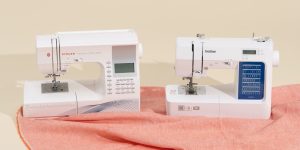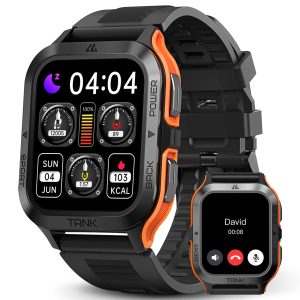Contents
- Homemade Slow Feeder Dog Bowl Ideas
- Simple DIY Slow Feeder Dog Bowl Ideas
- Creative Materials for DIY Slow Feeder Dog Bowls
- DIY Slow Feeder Dog Bowls for Different Breeds
- Interactive DIY Slow Feeder Dog Bowls
- Tips for Making Safe and Effective DIY Slow Feeder Dog Bowls
- Training Techniques to Introduce DIY Slow Feeder Dog Bowls
- Managing Food Allergies or Special Dietary Needs with DIY Slow Feeder Dog Bowls
- Evaluating the Effectiveness of DIY Slow Feeder Dog Bowls
- Conclusion
Are you looking for a fun and interactive way to slow down your furry friend’s mealtime? Look no further than our Creative DIY Slow Feeder Dog Bowl Ideas! These innovative bowls provide mental stimulation and promote healthier eating habits for your beloved pup. With a variety of DIY options to choose from, you can easily customize a feeding solution that suits your dog’s needs and preferences. Say goodbye to gulping down food and hello to a more engaging and satisfying mealtime experience with our creative slow feeder dog bowl ideas.
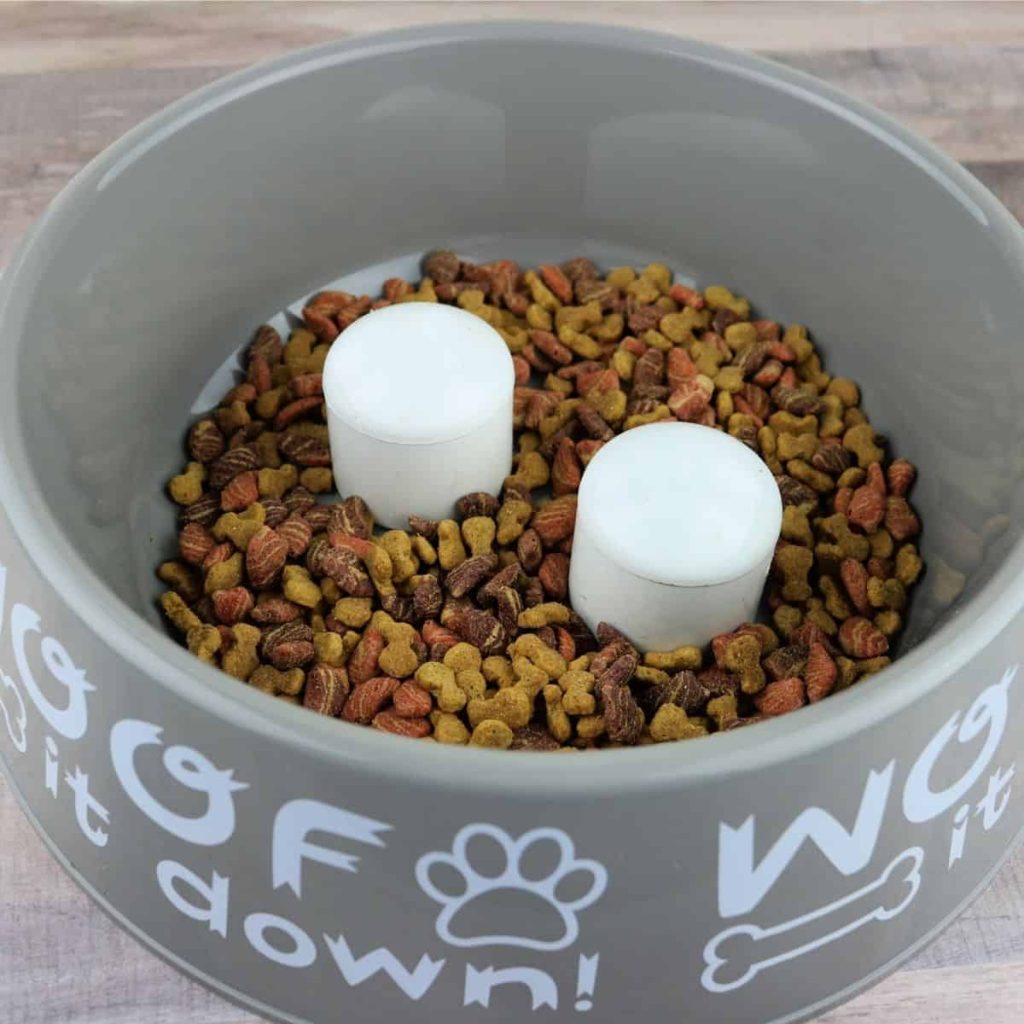
Homemade Slow Feeder Dog Bowl Ideas
Introduction to DIY slow feeder dog bowls
If you’re looking for a way to make mealtime more engaging and challenging for your furry friend, DIY slow feeder dog bowls might be the perfect solution. These homemade bowls are designed to slow down your dog’s eating speed, providing mental stimulation and preventing digestive issues. In this article, we will explore different ideas and materials for creating your own slow feeder dog bowls, as well as tips for training and managing food allergies or special dietary needs.
Benefits of using slow feeder dog bowls
Using slow feeder dog bowls offers numerous benefits for both you and your canine companion. First and foremost, they help prevent or alleviate digestive problems such as bloating and indigestion, which can be common in dogs that gulp their food down too quickly. Slow feeders also promote healthier eating habits, as they encourage portion control and prevent overeating. Additionally, the mental stimulation provided by these bowls can help alleviate boredom and reduce behavioral issues. Overall, using slow feeder dog bowls can enhance your dog’s mealtime experience and contribute to their overall well-being.
Considerations before making your own slow feeder dog bowl
While DIY slow feeder dog bowls can be a cost-effective and fun project, there are a few important considerations to keep in mind before you start. First, consider your dog’s chewing habits and the durability of the materials you plan to use. Ensure that the bowl will withstand your dog’s chewing and won’t present a choking hazard. It’s also essential to choose materials that are safe and non-toxic for your dog. Lastly, take into account the size and breed of your dog when selecting or creating a slow feeder to ensure it’s appropriate for their specific needs.
Simple DIY Slow Feeder Dog Bowl Ideas
Using muffin tins
One simple and easily accessible option for a DIY slow feeder dog bowl is to use muffin tins. Fill each individual compartment with a portion of your dog’s kibble or wet food, making it more challenging for them to access the food quickly. This method encourages them to use their noses and tongues to navigate through the tins, slowing down their eating pace and promoting mental stimulation.
Kong toys as slow feeder bowls
Another popular choice for a DIY slow feeder dog bowl is to repurpose Kong toys. Kong toys are durable and can be filled with your dog’s food or treats. By stuffing the Kong with their meal, you create a challenging puzzle for your dog to solve, as they need to manipulate the toy to retrieve the food. This not only slows down their eating but also provides an engaging and interactive mealtime experience.
Creating a puzzle board
For the more creative and hands-on dog owners, creating a puzzle board can be an exciting DIY project. Using a sturdy board or sheet of wood, attach various compartments or obstacles that your dog needs to navigate in order to reach their food. You can incorporate different shapes and textures to add more complexity to the puzzle. This homemade slow feeder will keep your dog entertained and extend their mealtime.
Using ice cube trays as slow feeders
If you’re looking for a quick and easy DIY slow feeder option, consider using ice cube trays. Simply portion out your dog’s food into the individual compartments and freeze it. The frozen food will require your dog to lick and nibble at it slowly, making mealtime more challenging. This is a great option for hot days, as it also serves as a refreshing treat to help cool them down.
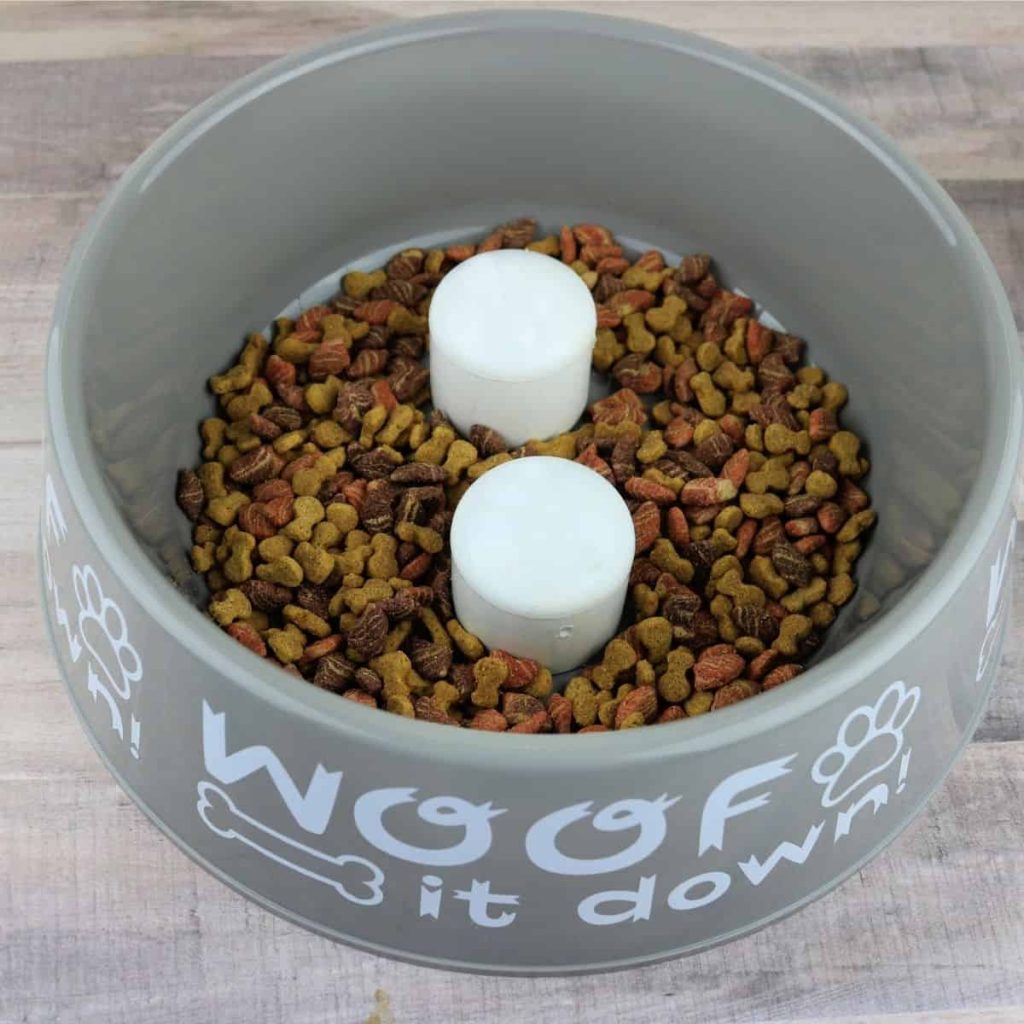
Creative Materials for DIY Slow Feeder Dog Bowls
Using PVC pipes
PVC pipes can be repurposed into unique and interactive slow feeder dog bowls. By drilling holes of various sizes into the pipe and sealing one end, you can create a maze-like structure for your dog’s food. As your dog pushes and nudges the pipe, the food will gradually fall out, requiring them to navigate the maze to access their meal. PVC pipes are durable and easy to clean, making them a practical option for DIY slow feeders.
Utilizing recycled materials
If you’re environmentally conscious, utilizing recycled materials for your DIY slow feeders can be a great way to reduce waste. Items such as empty plastic bottles or containers can be repurposed by cutting holes or slits into them and filling them with your dog’s food. Not only does this provide a slow feeding experience, but it also gives new life to items that would have otherwise ended up in the trash.
Making a slow feeder from a cardboard box
If you’re looking for a temporary or disposable option, a slow feeder made from a cardboard box can be an easy and affordable choice. Cut holes of different sizes into the box and place your dog’s food inside. As your dog eats, they will need to maneuver their snout or paws through the holes to access the food, slowing down their eating speed. While not as durable as other options, cardboard boxes are easily replaceable and can be recycled after use.
Using a tennis ball
For a quick and simple DIY slow feeder, consider using a tennis ball. Cut a small slit in the tennis ball, large enough to fit your dog’s kibble or treats. Then, place the food inside the ball and let your dog figure out how to retrieve it. The small opening will require your dog to roll, toss, and work the ball to get the food, effectively slowing down their eating pace.
DIY Slow Feeder Dog Bowls for Different Breeds
Slow feeders for small breed dogs
Small breed dogs typically have smaller mouths and may struggle with larger or more complex slow feeder designs. For these dogs, using muffin tins or Kong toys can be an ideal option. The smaller compartments in a muffin tin or the interactive nature of a stuffed Kong toy allow them to enjoy their meals at a manageable pace.
Slow feeders for medium breed dogs
Medium breed dogs may benefit from a combination of slow feeder options. Puzzle boards or PVC pipe mazes can provide a stimulating challenge for these dogs, encouraging them to work for their food. Kong toys and ice cube trays can also be effective choices for slowing down their eating speed and promoting mental stimulation.
Slow feeders for large breed dogs
Large breed dogs often have strong jaws and can handle more durable slow feeder designs. PVC pipe mazes and puzzle boards with larger compartments can provide a suitable challenge for these dogs. Tennis balls with larger openings can also be used, as they require a bit more effort and coordination to retrieve the food.
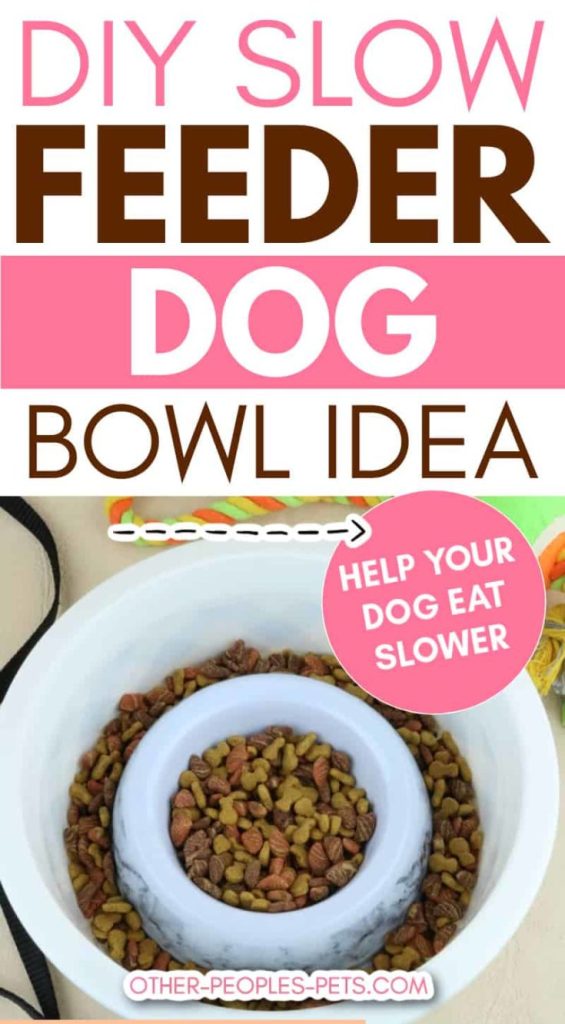
Interactive DIY Slow Feeder Dog Bowls
Constructing a treat-dispensing bottle
Creating a treat-dispensing bottle is a great way to make mealtime more interactive for your dog. Simply take a plastic bottle and cut small holes or slits into it. Fill the bottle with your dog’s food or treats and let them roll, push, and paw at it to release the food. This not only slows down their eating but also engages their problem-solving skills.
Creating a snuffle mat as a slow feeder bowl
Snuffle mats are a fantastic DIY project that combines a slow feeder with the natural instinct of dogs to use their noses to search for food. Take a rubber mat or piece of fabric and attach strips of fleece or fabric to it. Hide your dog’s food within the strips, and watch as your dog sniffs and searches for their meal. This activity provides mental stimulation, slows down eating, and satisfies their natural foraging instincts.
Building a food-dispensing puzzle toy
If you’re up for a more challenging DIY project, building a food-dispensing puzzle toy can be a rewarding endeavor. This can be done using various materials such as wood, PVC pipes, or even repurposed toys. The idea is to create a mechanism or structure that requires your dog to manipulate it in order to release their food. The complexity of the puzzle can be tailored to your dog’s skill level and can be adjusted over time to keep them engaged and challenged.
Tips for Making Safe and Effective DIY Slow Feeder Dog Bowls
Avoiding small parts or choking hazards
When creating a DIY slow feeder dog bowl, it’s crucial to avoid using small parts or materials that could pose a choking hazard to your dog. Ensure that all components are securely attached and won’t easily detach during mealtime. Regularly inspect the bowl for any loose parts or signs of wear and tear, replacing them if necessary.
Ensuring the stability of the bowl
The stability of the slow feeder dog bowl is essential to prevent spills and accidents. Make sure the bowl or structure is sturdy and won’t topple over when your dog interacts with it. If using a puzzle board or a PVC pipe maze, consider attaching it to a stable base or securing it to the floor to prevent movement during mealtime.
Using non-toxic materials
Always prioritize the safety of your dog by using non-toxic materials when creating DIY slow feeder dog bowls. Avoid using materials that may leach harmful chemicals or dyes into your dog’s food. Opt for food-grade materials or seek out pet-safe options for peace of mind.
Proper cleaning and hygiene practices
Maintaining proper cleanliness and hygiene is crucial when using slow feeder dog bowls. Regularly clean the bowls using pet-safe detergents or disinfectants to prevent bacterial growth or contamination. Some bowls may be dishwasher-safe, while others may require handwashing. Follow the manufacturer’s instructions or recommendations for cleaning to ensure the longevity and safety of the bowls.
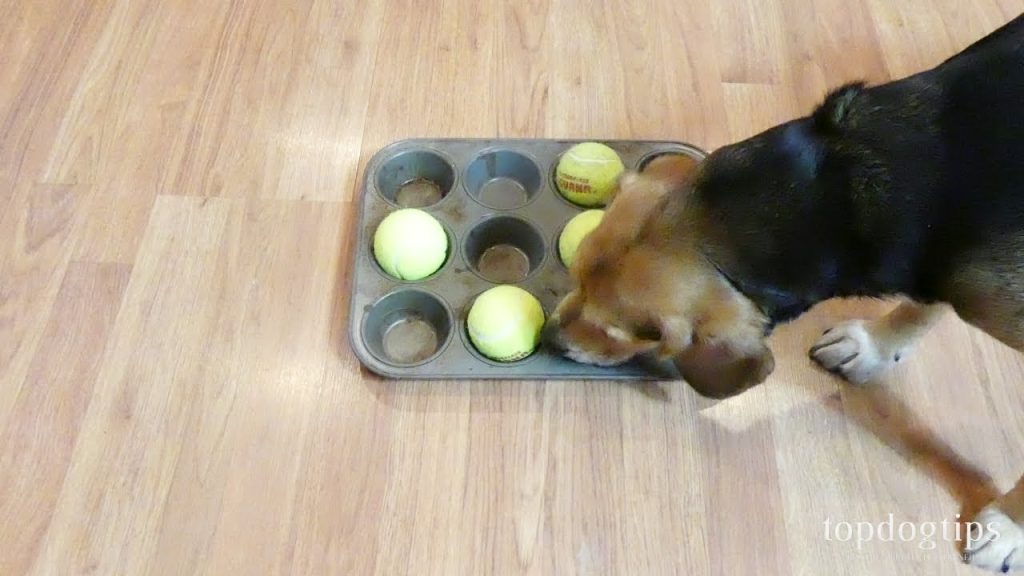
Training Techniques to Introduce DIY Slow Feeder Dog Bowls
Gradual introduction to avoid stress
Introducing a slow feeder dog bowl should be done gradually to avoid overwhelming or stressing your dog. Start by placing a small amount of their food in the slow feeder alongside their regular bowl. Allow them to become familiar with the new feeding method and gradually increase the amount of food in the slow feeder over several days or weeks. This gradual transition will help your dog associate the slow feeder with positive experiences and prevent any aversion or frustration.
Positive reinforcement training
Positive reinforcement training can be a valuable tool when introducing a slow feeder dog bowl. Anytime your dog engages with the slow feeder, such as nudging or manipulating it to retrieve their food, praise and reward them with treats or verbal praise. This positive association will strengthen their motivation to use the slow feeder and make mealtime more enjoyable for them.
Patience and persistence in training
Training your dog to use a slow feeder may require patience and persistence. Some dogs may take longer to adjust to the new feeding method, while others may catch on quickly. Be patient with your dog and provide them with consistent encouragement and support. Celebrate their small victories and continue to reinforce positive behavior. With time and consistency, your dog will become accustomed to the slow feeder and embrace the challenges it presents.
Managing Food Allergies or Special Dietary Needs with DIY Slow Feeder Dog Bowls
Using hypoallergenic materials
If your dog has food allergies or sensitivities, it’s essential to choose hypoallergenic materials for your DIY slow feeder dog bowl. Opt for materials that are free from common allergens such as latex or certain synthetic materials. Natural materials like bamboo or stainless steel are generally safe options that won’t trigger allergic reactions.
Customizing the slow feeder for specific dietary restrictions
Slow feeder dog bowls can easily be customized to accommodate specific dietary restrictions. For dogs with a wet food diet, consider using silicone molds or ice cube trays to portion out and freeze the food. This enables your dog to lick and nibble at the food, slowing down the eating process. If your dog requires a specific texture or consistency due to dental issues, adjust the size and shape of the openings in the slow feeder to accommodate their needs.
Consulting a veterinarian for guidance
If your dog has severe food allergies or dietary restrictions, it’s crucial to consult with a veterinarian before introducing a DIY slow feeder dog bowl. They can provide guidance and recommendations based on your dog’s specific needs and ensure that the slow feeder is suitable for their dietary requirements. A veterinarian’s expertise will help you create a safe and effective slow feeding solution.
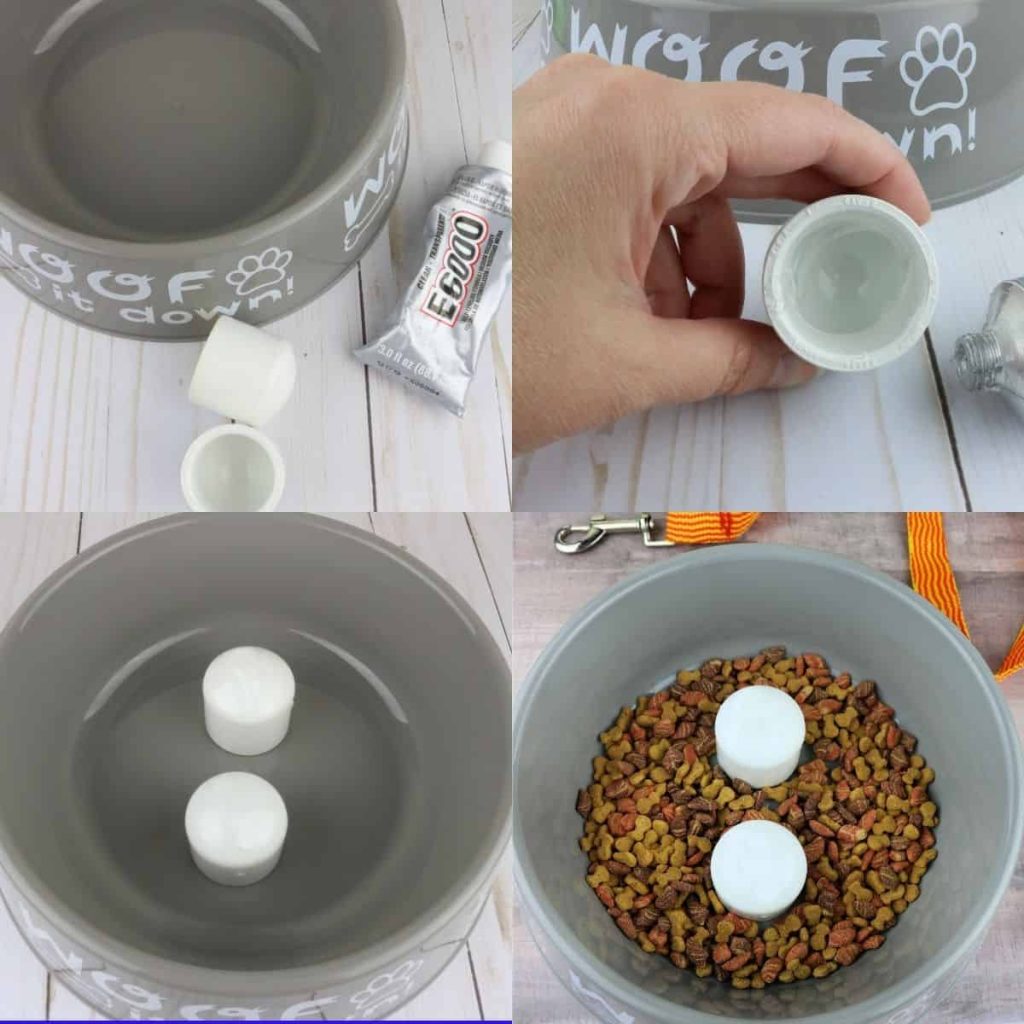
Evaluating the Effectiveness of DIY Slow Feeder Dog Bowls
Monitoring eating speed and behavior
To evaluate the effectiveness of a DIY slow feeder dog bowl, start by monitoring your dog’s eating speed and behavior before and after introducing the slow feeder. Observe if they are eating at a slower pace, taking breaks between bites, and engaging with the feeder’s interactive components. Note any changes in their behavior or digestion, such as reduced bloating or vomiting. These observations will help determine if the DIY slow feeder is effectively slowing down your dog’s eating and providing mental stimulation.
Weight management benefits
Using a slow feeder dog bowl can contribute to weight management by allowing your dog to eat at a slower pace and recognize when they’re satisfied. By prolonging mealtime and promoting the feeling of fullness, slow feeders can help prevent overeating and unnecessary weight gain. Regularly monitor your dog’s weight and consult with a veterinarian to ensure they maintain a healthy weight while using a slow feeder.
Ensuring a mentally stimulating mealtime
One of the key benefits of DIY slow feeder dog bowls is the mental stimulation they provide during mealtime. An effective slow feeder should engage your dog’s problem-solving skills and keep them mentally engaged. If your dog shows increased interest in mealtime, spends more time interacting with the slow feeder, and exhibits signs of mental stimulation, such as tail wagging or focused attention, these are indicators that the DIY slow feeder is successfully providing a mentally stimulating mealtime experience.
Conclusion
Final thoughts on DIY slow feeder dog bowls
DIY slow feeder dog bowls offer a creative and cost-effective way to enhance your dog’s mealtime experience. By slowing down their eating speed and providing mental stimulation, these homemade bowls can alleviate digestive issues, promote healthier eating habits, and prevent boredom. With a wide range of materials and design options available, you can create a personalized slow feeder that suits your dog’s size, breed, and dietary needs.
Encouragement to try different ideas
Experimenting with different DIY slow feeder dog bowls can be a fun and rewarding process. Don’t be afraid to try out various materials, designs, and interactive elements to find what works best for your dog. Every dog is unique, so what may be effective for one dog may not work for another. Embrace the opportunity to get creative and enjoy the process of creating a challenging and engaging mealtime experience for your furry friend.
Benefits of providing a challenging mealtime experience for dogs
By investing time and effort into creating DIY slow feeder dog bowls, you’re providing your dog with numerous benefits. Beyond the physical advantages of slow feeding, such as improved digestion and weight management, the mental stimulation and engagement offered by these bowls are invaluable. With a challenging mealtime experience, your dog’s mind is stimulated, boredom is reduced, and their overall well-being is enhanced. So, why not give DIY slow feeder dog bowls a try and give your furry friend an exciting and rewarding mealtime experience?

